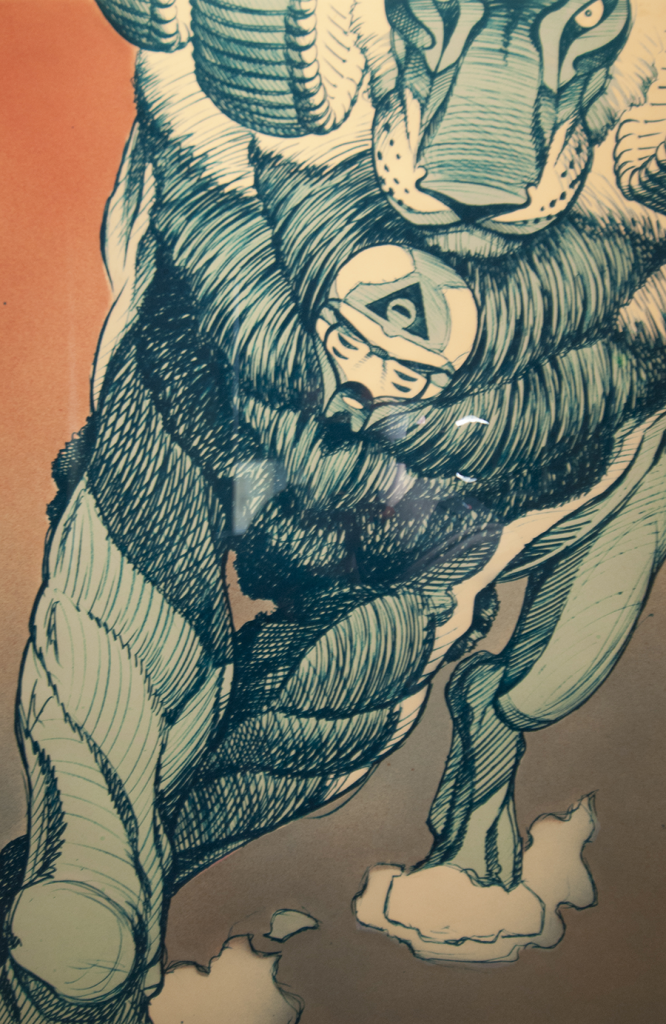By Kelli Henderson/entertainment editor
Pina in 3-D is a flurry of rapid eye movements and a kaleidoscope of colors and sounds.

This documentary written and directed by Wim Wenders is a tribute to the late Pina Bausch. The film opens with a shirtless woman holding an accordion and showing hand movements of the seasons: spring, summer, fall and winter. This is followed by what seems like an endless snaking line of beaming dancers simultaneously doing the same motions.
Throughout the 103-minute film, viewers see re-enacted scenes of dancing, either ones Bausch danced in herself, like Café Müller, or ones she directed. The documentary includes tidbits of footage of Bausch directing and dancing or just sitting, watching her dancers.
Her tribute is not just through the re-enactments. Before every scene, one of her dancers sits silently as a voiceover tells the audience the dancer’s thoughts on what each learned from the German choreographer.
“Some things leave you speechless … and that is where dance comes in,” Bausch said.
Bausch started dancing at 14 at the Folkwang School in Essen, Germany. She enrolled in the Juilliard School in New York City in 1960, performed in the Metropolitan Opera Ballet and later became the choreographer for the Folkwang Tanzstudio, which she renamed Tanztheater Wuppertal. Tanztheater, or dance theater, was seen to others as Bausch’s own dance genre.
The majority of Bausch’s pieces include unexpected elements on stage, all being used by the dancers. One performance requires the whole stage to be covered in dirt, and the dancers roll around and crawl in it until their white dresses and shirts are totally brown. Another performance has the stage and dancers drenched with water pouring from the ceiling with a giant boulder sitting off to the side. No prop or element is left untouched. The dancers somehow do everything but ingest the props.
“Pina had gone deep into research of the human soul, soul that expressed itself through our bodies and that language she spoke and read like nobody else,” said director Wim Wenders in an interview with The Guardian newspaper in London.
Wenders and Bausch became friends in the 1980s and decided to make a documentary on Bausch in 2009, but only two days before filming was to start, Bausch died. He pulled the plug on the whole production because Bausch was the inspiration, and without her, he had nothing, he said. A few weeks later, the dancers of her theater came together, and with them, Wenders created this documentary.
Wenders said James Cameron, creator of the movie Avatar, was his inspiration in filming.
“I didn’t know I was waiting for 3-D. I was waiting for an inspiration … Cameron showed us the possibility with Avatar. It’s not necessarily the war scenes and all that,” Wenders said. “It’s almost the quietest moment in the film when he goes into the forest for the first time. All of a sudden, I sensed what was possible with this language and this new technique. You could also visit our planet in a different way.”
Pina is a story of one woman’s life work, her passion and dreams. The 3-D technology pulls the audience into the scenery where it invites you to dance on stage in the rain or feel the cars streaming by as the performers dance in the median on a busy street. The dancers’ revelations of their past choreographer is heart-wrenching and makes the audience feel like they were a part of Tanztheater as well. Bausch made history in the 20th century, and this accumulation of her work proves it.


























